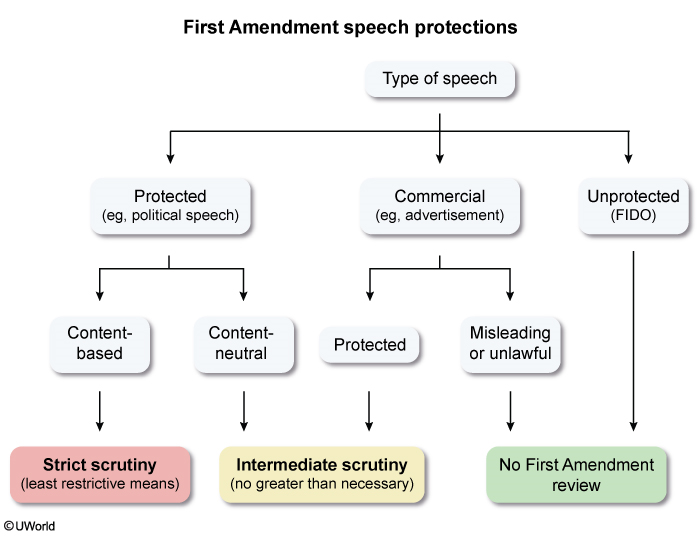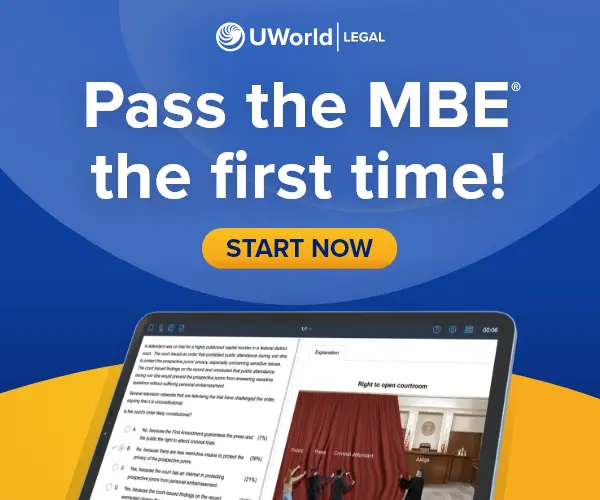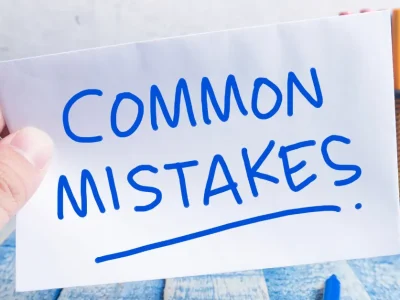As a future lawyer, you know that the First Amendment doesn’t protect all forms of speech—you can burn the American flag, but you can’t shout fire in a public theater. However, confusion can flare up once you’re asked to identify the level of protection afforded certain speech. But don’t sweat it! Here’s an easy way to extinguish the flames.
(1) Determine which category of speech the government is trying to restrict. First Amendment speech falls into three main categories:
- Unprotected speech – Fighting words/true threats, Incitement of violence/crime, Defamation, and Obscenity (FIDO)
- Commercial speech – economically-oriented expression (e.g., advertisements)
- Protected speech – all other types of expression (e.g., political protests, symbolic conduct)
(2) If you’re dealing with unprotected speech, then it’s easy! This type of speech is not protected by the First Amendment and can be freely regulated.
(3) If you’re dealing with commercial speech, consider whether that speech is fraudulent or concerns unlawful activity. If so, then it’s unprotected speech that can be freely regulated (easy again!). If not, then the government restriction must survive intermediate scrutiny. This scrutiny requires the government to prove that the restriction directly advances a substantial government interest and is narrowly tailored (or no greater than necessary) to serve that interest.
(4) If you’re dealing with protected speech, then simply determine whether the restriction is either:
- content-neutral – it targets the time, place, and manner of speech or
- content-based – it targets speech based on its subject or message
Content-neutral restrictions are subject to intermediate scrutiny, but the government must also show that the restriction leaves open ample alternative channels of communication. In contrast, content-based restrictions are highly disfavored, so they are invalid unless they survive strict scrutiny. This scrutiny requires the government to prove that its restriction is necessary and narrowly tailored (or the least restrictive means) to serve a compelling government interest.
An overview of this analysis is provided in this flowchart:

You can use this tip when answering practice questions in the UWorld MBE® QBank.




